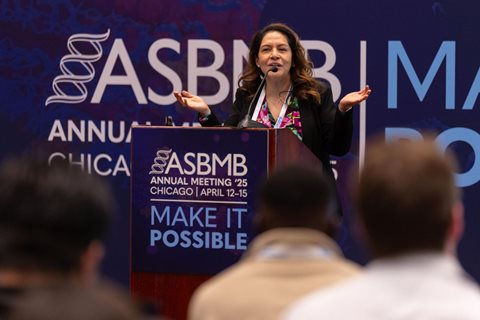Maternity planning for postdocs
Planning to start a family can be a challenge for early career researchers, who often wonder when the “best” time might be. During graduate school? While on the tenure track? After tenure? Those considering the postdoctoral years can be constrained by multiple short-term appointments and the general uncertainty of a job market that offers no guarantees of stable, long-term employment.
Recent focus groups conducted by the National Postdoctoral Association spotlighted these concerns among current and former postdoc women. A key concern expressed by participants was how to balance the “postdoc clock” versus the biological clock. One postdoc characterized the uncertainty this way: “You know, having a baby during grad school: maybe not the best idea. Having your baby while you’re tenure-track: maybe not the best idea. So does that mean that I have to get pregnant right now because my postdoc is 24 months long, and that's it?”
Underscoring this uncertainty is the fact that postdocs often experience a lack of defined status at their institutions, or, as described by focus-group participants, a feeling of being “in limbo.” As neither students nor faculty members, postdocs can feel isolated at institutions that lack infrastructure to support their positions, such as family-responsive policies such as paid maternity leave. Most postdocs cobble together combinations of annual leave, partially paid disability insurance and unpaid leave. Moreover, the details of how such benefits apply to postdocs can be confusing due to the variety of postdoc employment classifications and funding sources.
To demystify the process of maternity planning, the National Postdoctoral Association recently published “A Postdoc’s Guide to Pregnancy and Maternity Leave.” It provides an overview of planning issues for women who are pregnant or considering becoming pregnant during their postdoc and for their partners, including safety during pregnancy, understanding paid- and unpaid-leave options, and advice for keeping research going during pregnancy and leave. Below are some highlights from the guide.
 |
|
©National Postdoctoral Association |
Pregnancy safety: Postdoc women considering pregnancy should think about requesting an evaluation of workplace hazards to those of child-bearing age prior to conception. Such an evaluation can allow a postdoc to identify hazards without declaring a pregnancy earlier than needed.
Basic right to maternity leave: Under Title IX, women at federally funded institutions should be entitled to take, at the minimum, job-protected, unpaid leave for a “reasonable” amount of time. In practice, the details of how leave is taken, for how long and how it might be paid depend solely upon an institution’s policies. Postdocs should talk to their institutions’ postdoc and/or human-resources offices about their options.
Keeping your research going: Postdocs planning family leave should begin making arrangements early for needed research accommodations. A written research plan can help lay out milestones and expectations for this period and provide a mechanism for discussing leave with a postdoctoral supervisor or collaborators who may be able to help keep a project going.
Enjoy reading ASBMB Today?
Become a member to receive the print edition four times a year and the digital edition monthly.
Learn moreFeatured jobs
from the ASBMB career center
Get the latest from ASBMB Today
Enter your email address, and we’ll send you a weekly email with recent articles, interviews and more.
Latest in Careers
Careers highlights or most popular articles

Building the blueprint to block HIV
Wesley Sundquist will present his work on the HIV capsid and revolutionary drug, Lenacapavir, at the ASBMB Annual Meeting, March 7–10, in Maryland.

Upcoming opportunities
Present your research alongside other outstanding scientists. The #ASBMB26 late-breaking abstract deadline is Jan. 15.

Designing life’s building blocks with AI
Tanja Kortemme, a professor at the University of California, San Francisco, will discuss her research using computational biology to engineer proteins at the 2026 ASBMB Annual Meeting.

Upcoming opportunities
#ASBMB26 late-breaking abstract submission opens on December 8. Register by Jan. 15 to get the early rate on our Annual Meeting.

Make your abstract stand out
Ensure your research is impossible to overlook. Get quick, practical reminders for crafting an abstract that attracts readers and helps you build connections at the conference.

Inside industry postdocs
As more Ph.D. scientists look beyond academia, industry postdocs offer a new kind of training, where mentorship meets mission-driven research. Fellows at Pfizer and Genentech share how these programs prepare them to translate discovery into impact.

